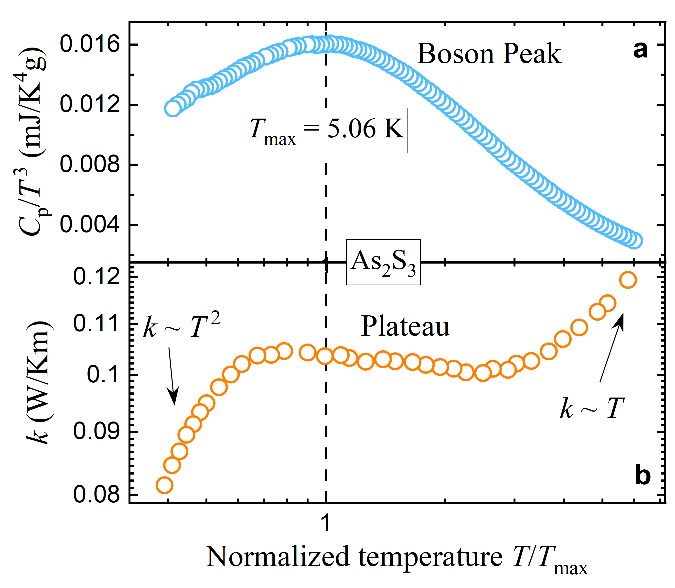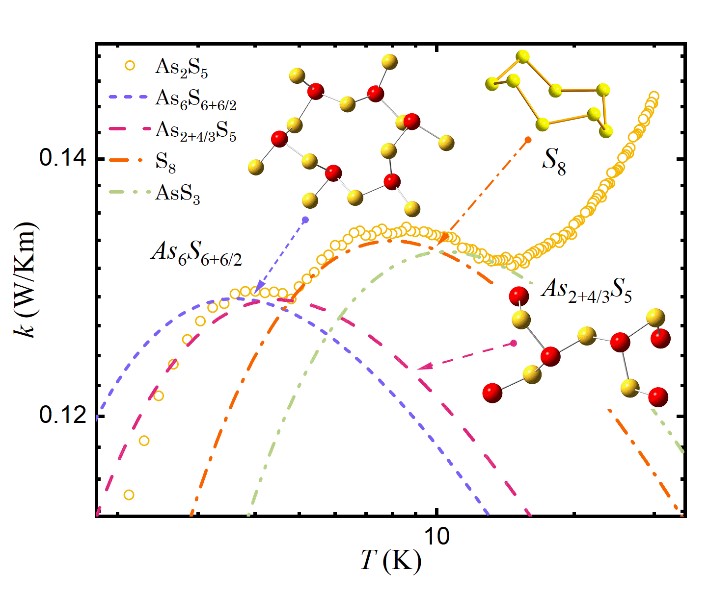Glasses are materials that are characterized by a disordered structure. The study of glasses is not only interesting from a practical point of view but also for its fundamental properties. Glasses are characterized by “universal anomalous behavior” that is not observed in ordered structures at very low temperatures. They are, for example, the boson peak in the thermal capacity (Cp/T3) and the plateau in the thermal conductivity k. The origin of these anomalies still belongs to an unsolved problem in the physics of condensed matter since they were first observed experimentally in 1970. Our latest work comes with a possible explanation for the abovementioned anomalies. Based on our experimental measurements and computer simulations, we conclude that nanoclusters with a specific size and shape, specifically larger ring-like nanoclusters, are responsible for these anomalies. The study was published in the prestigious Journal of Non-Crystalline Solids [P. Baloh et al., J. Non Cryst. Solids 600 (2023) 122040] and has an impact factor of 4.458.
The universal anomalous properties of glasses at low temperatures
Study at UPJŠ
















